“It started out as a coping mechanism during late-night car journeys where I’d see a lot of dead animals around” Claire Spiller on the inspiration for Raze from Good Comics
With it’s haunting image of a stag on the cover, and the strange and wonderful creatures inside, Claire Spiller’s Raze is a wonderfully thoughtful look at man’s impact on nature. With a lot to consider and taken in after our review of it last week, we contacted Claire to find out more about it’s inspiration and what she hopes the book can achieve in terms of changing people’s attitude towards animals on the road.
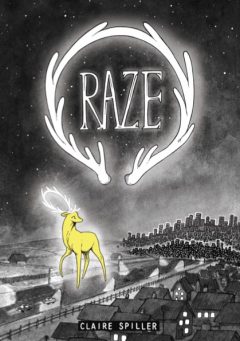 Can you tell us a bit about the inspiration for Raze? It feels like a mix of classic folklore/myth and contemporary environmental allegory. Which part of the story came first and how did it evolve? And are there any parts of the story which were key to its development?
Can you tell us a bit about the inspiration for Raze? It feels like a mix of classic folklore/myth and contemporary environmental allegory. Which part of the story came first and how did it evolve? And are there any parts of the story which were key to its development?
CS: Raze started out as a sort of coping mechanism during late-night car journeys where I’d see a LOT of dead animals around. Just seeing a fox on the roadside would have my brain spinning – did that fox have cubs? Did it have a mate? How old was it and where had life taken it to end up unceremoniously ignored on the side of the motorway? Eventually, I channelled that into making a story where a glowing white deer curled around each animal and told their stories as a way of acknowledging that they existed and suffered.
The folklore elements of the story were something that I developed separately but eventually combined with other bits of ideas to form Raze. When the pieces started to fit, the emphasis became more on the way that humans see themselves as wholly different to animals when we’re just big apes in costumes. It’s that superiority that means we choose not to see roadkill unless it’s a human body. Once I realized that this was the heart of the story, everything else fell into place and it sort of wrote itself.
Both this, and Lost Light, are built around a strong environmental theme, (light pollution and animals killed on the roads) why is it important for your work to have such a message to it? And why do you think comics works so well for getting this message across?
CS: When I think about the sort of stories I could tell I’m always drawn to ones that tie in with real ongoing issues, ones that could not just entertain people but make them aware of something that they might not have thought about before. There’s a whole range of dramatic, tragic and uplifting stories when it comes to humans clashing with nature – light pollution and roads are just the tip of the iceberg. It’s something that I’ve definitely seen growing in the indie scene, but it still feels like such an untapped source of storytelling. The societal awareness of our impact on nature has encouraged people to feel more empathy for wildlife and the natural world than ever before, so I think people are more willing to engage with stories outside of the human experience. And the wonderful thing with portraying that in comics is that you can be experimental with the way you use language and how you incorporate it into the story. Showing the relationship between man and the wild is so much more visually compelling than anything else. There’s so much potential to play with the format.
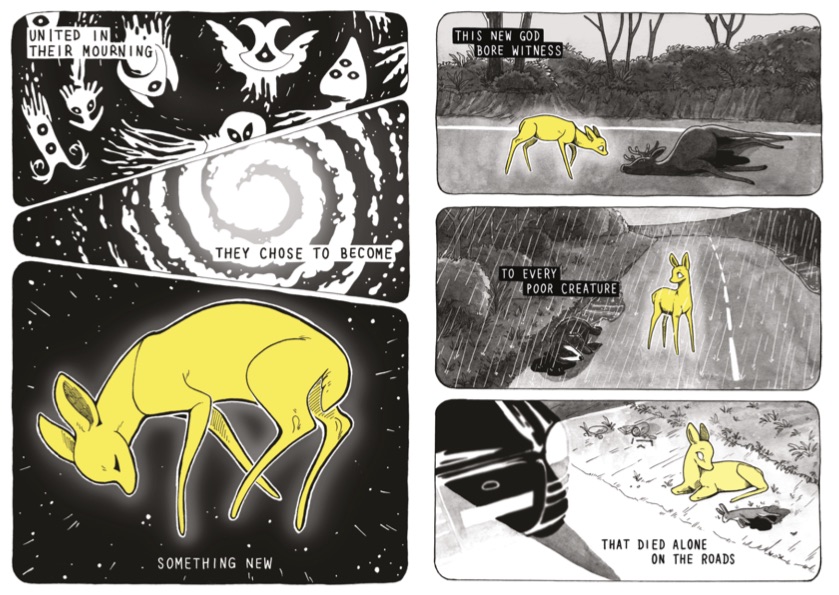
The book is built around a very iconic image of a yellow stag. Was this always part of the concept or did it evolve over time? Did you always plan for it to be black and white as well?
CS: Raze was originally going to be a riso printed zine. But I pitched it to Good Comics, they liked it, and we decided to expand it. I decided then that I wanted to get back to basics and challenge myself to really focus on sharpening my skills with values. The stag was originally going to be white, but when I started reducing everything to black and white it became hard to make him look both ethereal and eye-catching. In early designs he looked like a washed out but otherwise very normal deer, which didn’t work. Going with the yellowy-gold was an effort to make him appear ostentatious and really highlight how lost ‘man’ is that he still can’t see him.
The landscapes and animals are really striking and so detailed, did you need to do much research and find much source material to make it accurate?
CS: Yep! A lot of Raze took me outside of my comfort zones of plants and trees, so I relied quite a lot on reference for the roads and cars. I also had a few harrowing days of researching reference for the dead animals as I didn’t want them to look too gnarly, but at the same time, everything I drew without reference looked like it was just sleeping. As horrible as it was, it definitely fired me up and reinforced why I was making the book.
We love the surreal, mythological animals and creatures at the beginning. They must have been really fun to create and come up with? Which are your favourite and how did you come up with the various weird and wonderful creatures?
CS: I had a great time designing them. I wanted to keep them as vague and unknowable as possible, but I still had my own little ideas about what each one’s personality and function would be. I originally drew inspiration from Bobo masks and combined them with different shapes and animals to make creatures that were sort of recognizable but also quite alien. I came at it from the direction of designing something that reflected elements of aboriginal art from around the world. You could believe that ancient humans from around the world encountered these things and tried to reflect them in their art. My favourite is the little guy with the ‘8’ shaped head and six legs, he feels like the sweetest, most playful of them to me.
What do you hope people get out of reading a book like Raze? Do you think it will change people’s attitudes towards nature, or is it just about making them think about their actions?
CS: I always worry that tackling these kinds of subjects can come across as preachy, so I try to deliver my comics in a way that presents you with a journey and then some facts that anchor that journey in the real world. What the reader does with those facts is up to them. I like to think Raze will make people think about how we as a society view ourselves as superior to animals, something that is at the root of most of our conflicts with the natural world. Challenging that can be pretty hard, but once you get people thinking about it, they’re able to go on their own journeys.
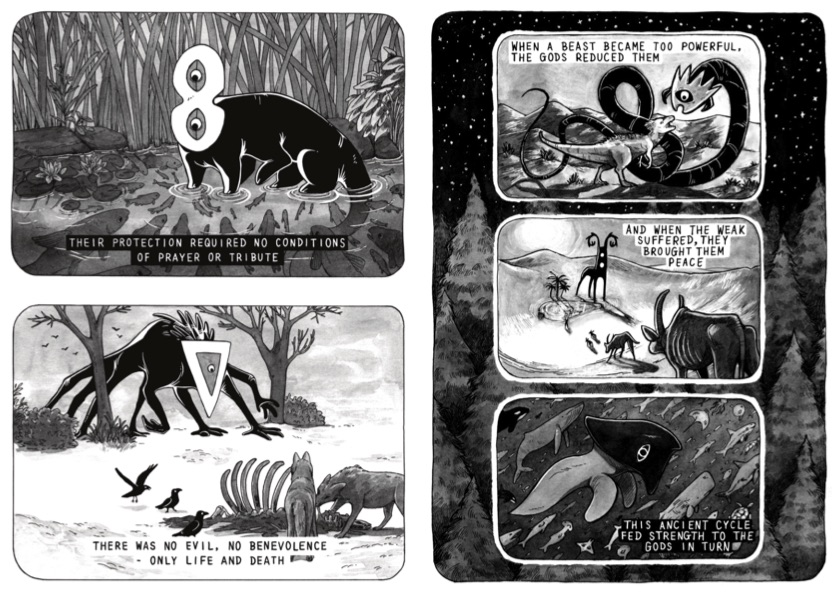
And finally what are you working on next? Is the current enforced shutdown firing your creativity or stifling it?
CS: I’m very much someone who thrives on planning and stability, so the situation now is making it hard for me to concentrate on starting anything new. Just doodling things within my comfort zone is really as much as my brain is capable of until we get a bit of normality going again. I do have a few projects lined up, including a 6-page comic for Wine & Zine Anthology Vol. 2 and some non-fiction wildlife stuff, but I’m taking it day by day and putting the health and well-being of myself and my family before everything.
You can purchase Raze for £5 from the Good Comic online store here. And to find out more about Claire and her work visit www.clairespiller.co.uk or follow her on twitter @claireaspiller and instagram @theclairespiller
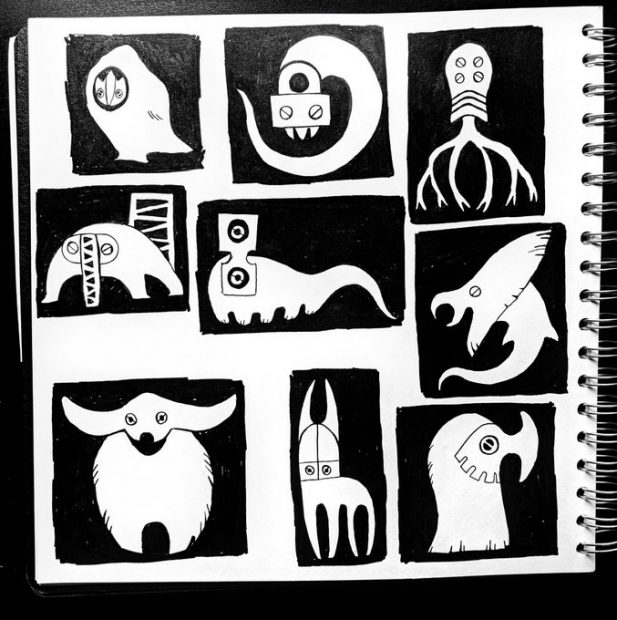
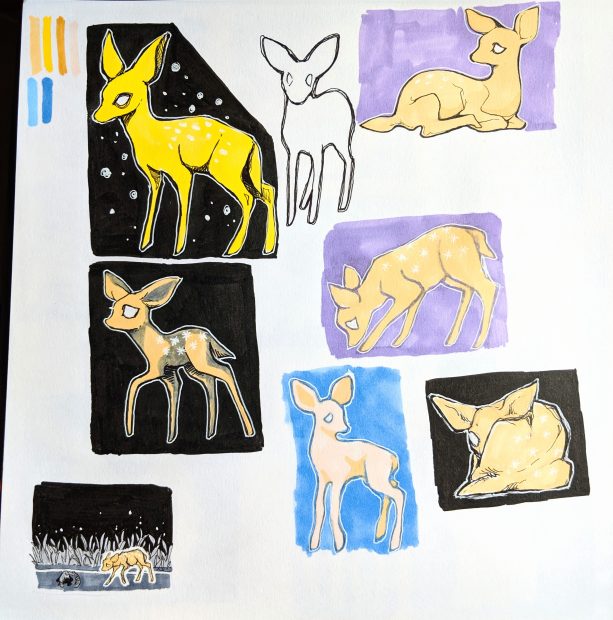



October 8, 2025 @ 9:25 pm
Clear, concise, and effective. Stream ptv sport live online streaming — schedules and replays. mobile and desktop friendly. program guide, results, clips. fast, reliable HD streaming.
November 30, 2025 @ 1:39 am
Thank you for your sharing. I am worried that I lack creative ideas. It is your article that makes me full of hope. Thank you. But, I have a question, can you help me?
December 11, 2025 @ 7:38 am
Can you be more specific about the content of your article? After reading it, I still have some doubts. Hope you can help me.
December 20, 2025 @ 10:33 am
Diese wöchentliche Ausstellung präsentiert Ihnen die besten von allen aktuellen Freispielen mit und ohne
Einzahlung, die in Stakersland angeboten sind. Mit einem No Deposit Bonus können Sie im Online Casino spielen und
Echtgeld gewinnen, ohne Ihr eigenes Geld zu riskieren. Während die kostenlose Spielzeit vor allem in Casinos von RTG, Rival, BetSoft, Play N Go angeboten wird,
findet man gratis Freispiele häufig bei Angeboten von Gamomat oder Amatic Spielotheken. Erhältst Du bei einem Casino Bonus 50 Euro und möchtest Deine Prämie freispielen, dann musst Du die Umsatzvorgabe innerhalb eines vorgegebenen Zeitrahmens erfüllen. Allerdings stehen dir in den besten Online Casinos viele weitere Bonusangebote wie Einzahlungsboni,
Freispiele oder Cashback zur Verfügung, die du als
Bestandskunde regelmäßig nutzen kannst. Um sich von der Konkurrenz abzuheben und Kunden zu gewinnen, geben die Betreiber oft Bonusangebote und Freispiele heraus.
Dies ist wirklich lohnenswert, da alle Freispiele von unseren Bonus-Gurus geprüft
und genehmigt wurden. Sparen Sie sich die Zeit, indem Sie alle besten Angebote mit einem
Blick scannen und diejenige Freispiele auswählen, die von unserem Bonusteam von Stakers HQ überprüft und genehmigt worden sind.
Wenn es insbesondere um Freispiele geht, lassen Sie uns Ihnen empfehlen, unsere Sunday Free Spins Messe zu besuchen.
Als Slot Liebhaber haben Sie sicher Freude an Freispielen ohne Einzahlung!
Kostenlos spielen können Sie am besten mit einem Bonus ohne Einzahlung.
Auch Bestandsspieler werden in Top Online Casinos
immer wieder belohnt. Allein auf unserer Vergleichsseite haben wir schon viele Anbieter für
Sie getestet, die großartige Bonusangebote liefern. Wir nehmen unseren Ruf als eine der besten Plattformen für kostenlose Casino Bonusangebote sehr ernst.
Melde dich für unseren zweiwöchigen Newsletter an und erhalte Zugang zu Turnieren, erfahre alles über die besten Bonusangebote, Warnungen vor unseriösen Casinos und mehr!
References:
https://online-spielhallen.de/quick-win-casino-deutschland-eine-umfassende-analyse/
December 26, 2025 @ 7:02 pm
This ensures that help is readily available for any inquiries or issues that may arise during their visit or online gaming experience.
This multilingual support ensures that a broader audience can enjoy the gaming
experience without language barriers. It’s designed for both iOS and Android devices, ensuring a high-quality gaming experience
on the go.
Guests can also join personal training sessions or guided yoga overlooking the harbour.
Experience the stunning beauty of Sydney from above at the Crown Sky Deck, an exclusive
observation platform offering 360° views of the Harbour Bridge,
Opera House, and skyline. Situated at Barangaroo, Crown’s hotel tower places guests just moments
away from Darling Harbour and the CBD. Crown Sydney is licensed and regulated
by the NSW Independent Casino Commission and
adheres to the strictest standards of responsible gaming.
Stream live blackjack, baccarat, and roulette tables — with real dealers, real cards, and real-time bets.
References:
https://blackcoin.co/5_types-of-casino-bonuses-in-new_zealand_rewrite_1/
December 27, 2025 @ 8:48 am
The casino operator will not accept liability arising out the use of this information. You can also
load money onto your smart card at the Cash Desk and use your smart card at the
tables to buy chips for your favourite game. Sports fans can enjoy online sports betting with Sunbet,
a secure and safe online platform where you can place bets on your favourite
sports and sports teams. Windmill is our Free State casino while in Gauteng,
you can head to Carnival City in the East Rand or Time Square in Pretoria.
Sibaya provides 24/7 entertainment in KwaZulu-Natal, while Flamingo in Kimberley
is your first port of call for gambling in the Northern Cape.
In the Eastern Cape, you can enjoy gambling at the Boardwalk in Port Elizabeth and the Wild Coast Sun in Port Edward.
Comparing WinSpirit casino with other sites, you’ll notice
differences in provider mix and VIP rewards. Key selling points include fast AUD transactions, a big library of pokies,
a modern mobile experience and a competitively structured loyalty programme.
WinSpirit positions itself as a player-focused operator for Australian customers.
References:
https://blackcoin.co/australian-online-gambling-a-comprehensive-guide/
December 29, 2025 @ 5:42 am
paypal neteller
References:
http://qpskkk.shop/
December 29, 2025 @ 6:04 am
paypal casinos online that accept
References:
https://justhired.co.in/employer/paypal-casino-sites-january-2026-trusted-deposit-option/